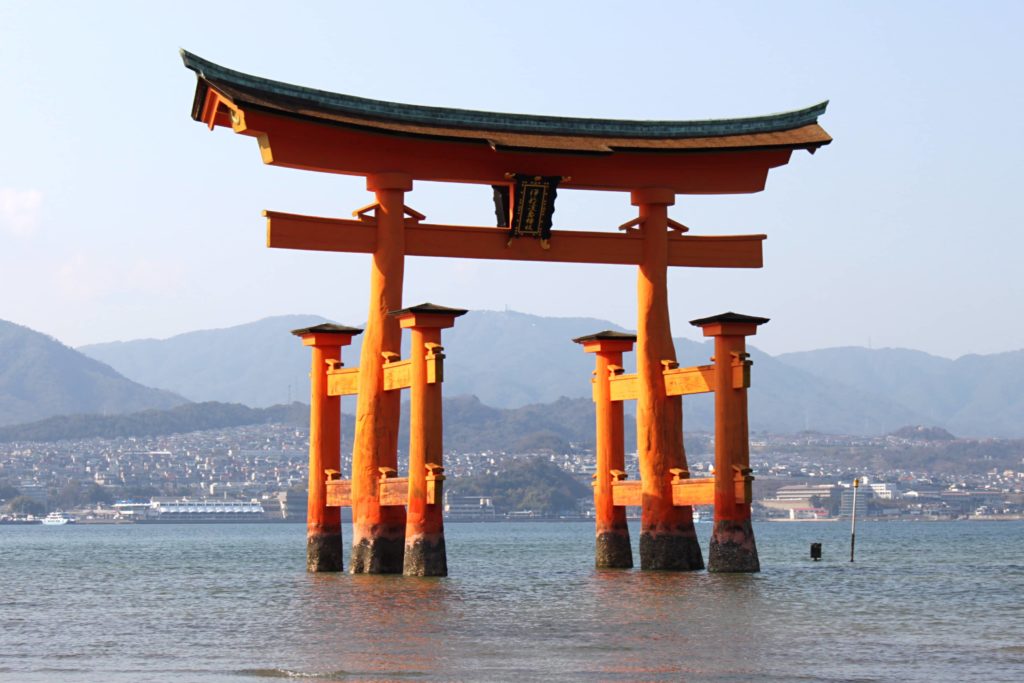Just off the Hiroshima coast, Miyajima Island is famous for having one of the top three most beautiful views in Japan that of a large torii gate which appears to be floating during high tide. Learn the best and cheapest ways to go and what to do when you get there!
Taking a Miyajima Island Day Trip
Hiroshima’s Miyajima island is a small place filled with large wonders, not the least of which is its world-renowned torii gate, whose mysterious floating facade has been captured on postcards everywhere. While the gate is worth seeing by itself, Miyajima has more to offer than just its famous gate; in fact, this extremely sacred place is home to so many wonderful shrines that its name actually means Shrine Island. In addition to its numerous shrines and temples, Miyajima is also known for its natural wonders, including numerous friendly deer. They don’t seem to mind being pet, but be careful – they’ll eat clothing and even your maps!
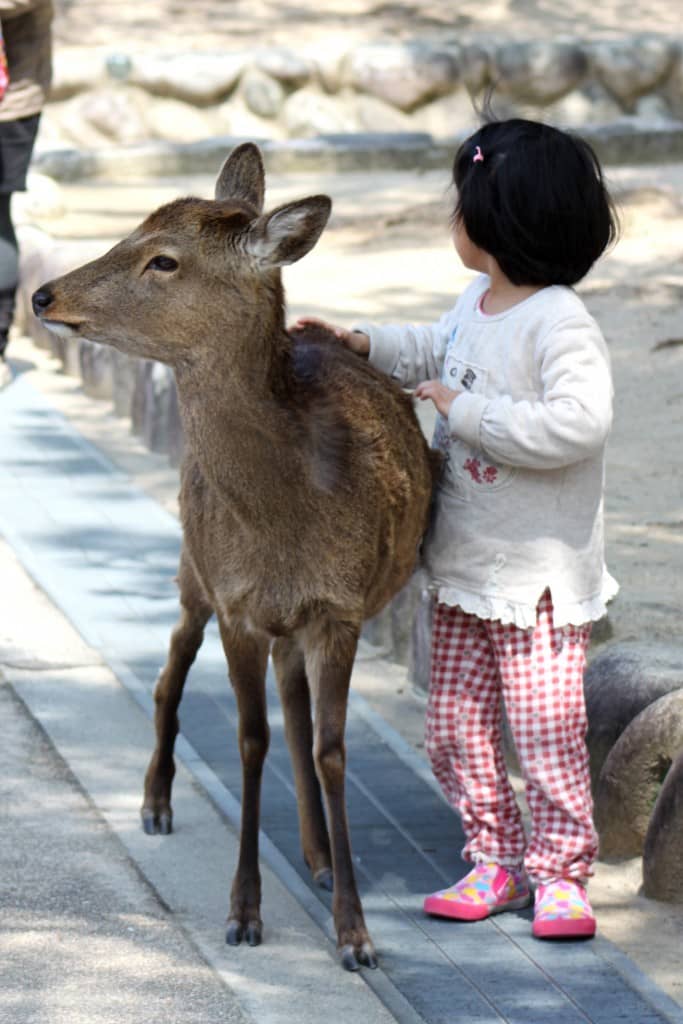
Miyajima Ferry Services
If you are staying near Hiroshima’s Peace Park, the most convenient way to reach Miyajima is by a direct boat from Motoyasubashi Pier (near the A-bomb Dome) to Miyajima Pier. The 45-55 minute journey costs \1,900, with no reservation required. For another \100, you can get a 2-day pass for the local streetcars, ferryboats and ropeway. If you are staying near Hiroshima Station, you can take a JR line train to Miyajimaguchi Station. The 30 minute trip costs \400. From there, you can take a short 10-minute Miyajima ferry from either JR or Matsudai companies for \170. There are multiple ferries per hour, and if you are on the southern coast of Hiroshima, you can take a high speed ferry directly from Uljina (Hiroshima) Port. This ferry costs \1,800 and takes only 22 minutes, but you need a reservation. Alternatively, for just \840 you can get a 1-day trip card from the Hiroden Company for their streetcars and the ferry. It takes 65 minutes from the Hiroden-Hiroshima Station to Miyajimaguchi Station.
What to See on Miyajima Island
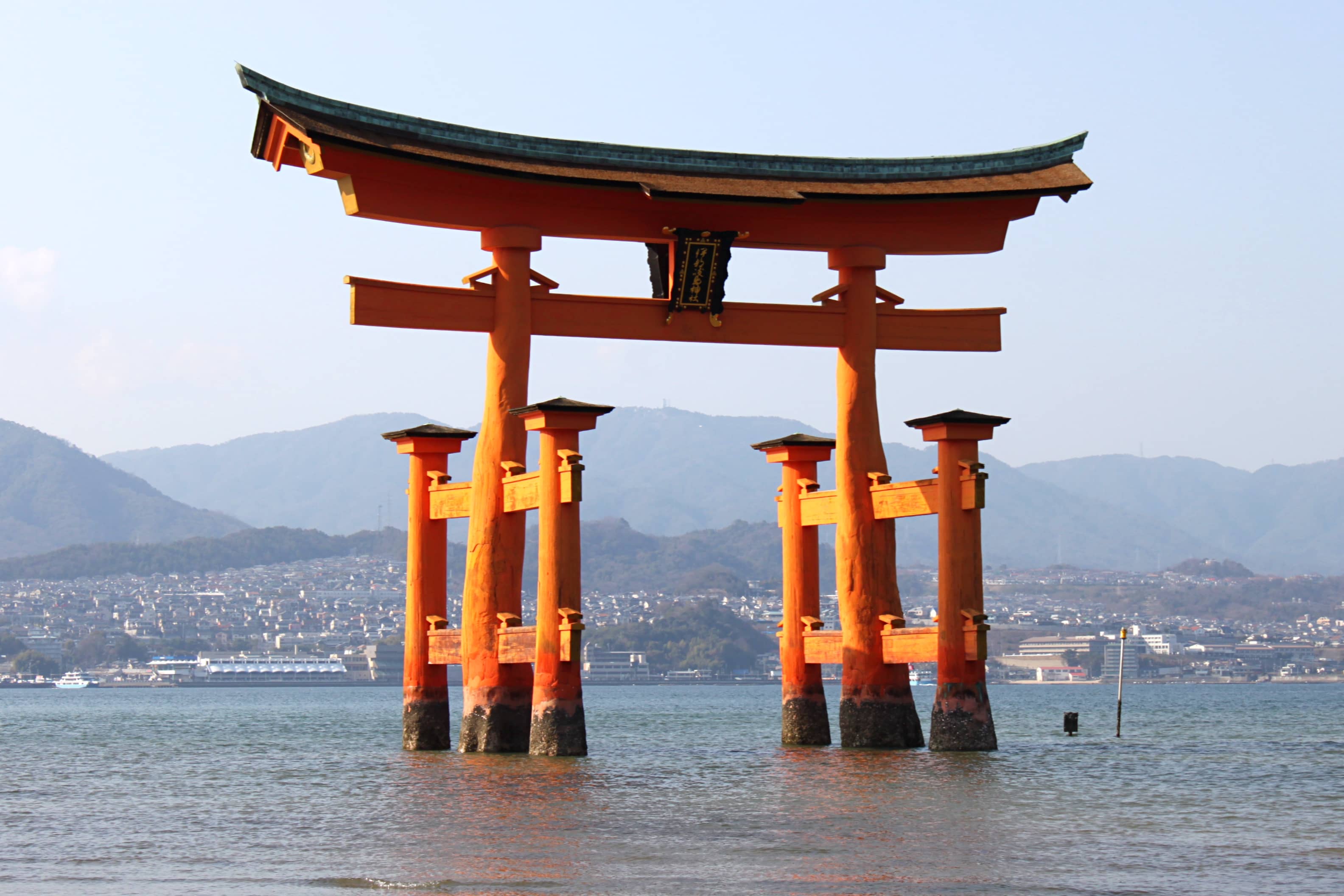
Itsukushima Shrine
A short walk from the Miyajima ferry terminal is Itsukushima Shrine and its famous crimson tori gate. The shrine, which was founded in 593 A.D. to honor the Japanese goddesses of the sea, is known for being built over the water on stilts. The complex includes several buildings connected with boardwalks. Admission to the shrine costs \300, or \500 for entry to the shrine and the Treasure Hall. Be sure to check the tide forecast to make sure you are on the island for high tide, when the gate will appear to actually float on the water. During high tide, you can even take a cruise around the bay and through the torii gate! Check with the tourist information center at the port for details. After sunset, the shrine and the torii are illuminated daily until 11 PM, although the shrine closes around 5 PM. Since the shrine looks so uniquely different according to lighting and tide conditions, it may be worthwhile to see it a couple of times throughout the day; just don’t miss the last ferry back to Hiroshima at 10:14 PM.
Senjokaku and the Five Story Pagoda
A very short walk walk from Itsukushima shrine is the Senjokaku Hall (part of Toyokuni Shrine) and the Five Story Pagoda. Senjokaku’s name means “Pavilion of 1000 Mats” because of the many tatami mats filling the enormous, mostly empty hall. The wooden hall was built by Toyotomi Hideyoshi to honor the fallen soldiers, but was never completed. Entrance costs \100. Next door is the colorful red-lacquer Five Story Pagoda, which predates the hall. It was originally built in 1407 and was restored in 1533. The elegant pagoda is a mix of Japanese and Chinese styles. In spring, the cherry trees bloom creating a beautiful scene of pink flowers against the red pagoda.
Daisho-in and Henjokutsu Cave
Daisho-in is an important Shingon Buddhist temple at the base of Mt. Misen. Although not as famous as Itsukushima Shrine, it is a fascinating and beautiful temple that should not be missed. After being founded in 806 A.D., the temple had close ties with the Shinto shrines on the island. Furthermore, in the 12th century Emperor Toba founded a prayer hall in the temple, and it maintained ties with the Imperial Family until the Meiji Restoration. After a short walk from Itsukushima Shrine, you will reach a set of stairs. Along the bannisters of the stairs are spinning “mani” prayer wheels inscribed with the sutras. Spinning the wheels as you walk up is believed to bestow the same blessings as reading the sutras themselves. After that first set of stairs, there are 500 “Rakan” statues of Buddha’s disciples.
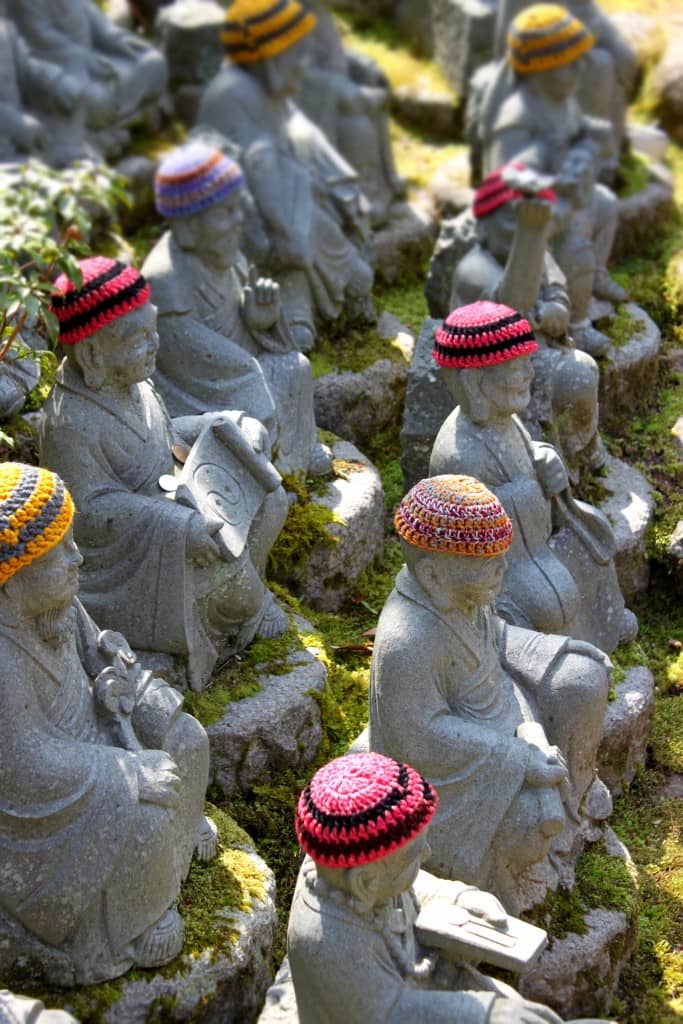
They each have unique expressions, and may be covered in hats lovingly knitted by followers to show respect for the disciples. Soon you will reach the main temple complex. Admission is free, but it is polite to leave either incense or a small monetary offering. Inside there are countless more sculptures. Beneath the temple complex is Henjokutsu Cave, a slightly eerie but beautiful cave filled with statues representing the 88 stations of the Shikoku pilgrimage, each containing a bowl of sand from each of the sites. Take the time to explore the many prayer halls, ponds, and statues of the Shrine complex. Then enjoy a vegan Buddhist lunch overlooking Miyajima at one of the beautiful tea rooms. After a relaxing break, continue up the hiking trail to Mt. Misen.
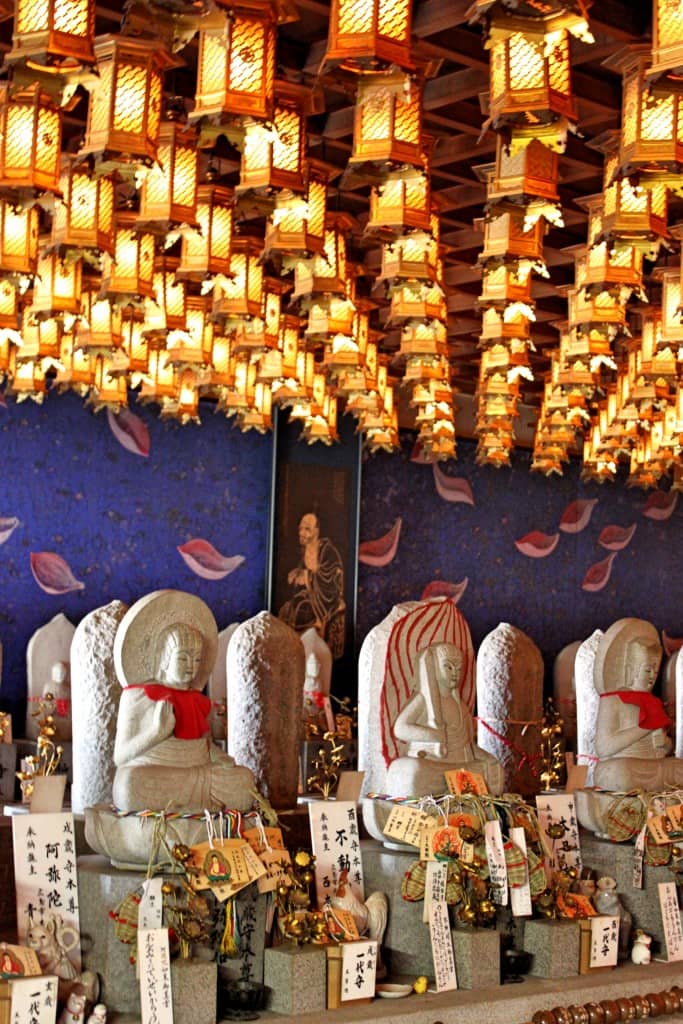
What to Do on Miyajima Island
Hiking Mt. Misen
On a clear day, you can see across the Seto Inland Sea to Hiroshima City from the summit of Mt. Misen. There are three paths from central Miyajima up to the summit, but the trail from Daisho-in is the most scenic and least steep. It takes about an hour and half to hike to the top from Daisho-in. If you don’t have the energy for a hike, you can take the ropeway from Momijidani Park to the Shishiiwa Ropeway Station atop Mt. Misen. The trip is \1000 one way (if you are up to walking back down) or \1800 round trip. Inside the Shishiiwa Ropeway Station is a cafe/observatory, but for the best views take a 30 minute hike from there to the peak.
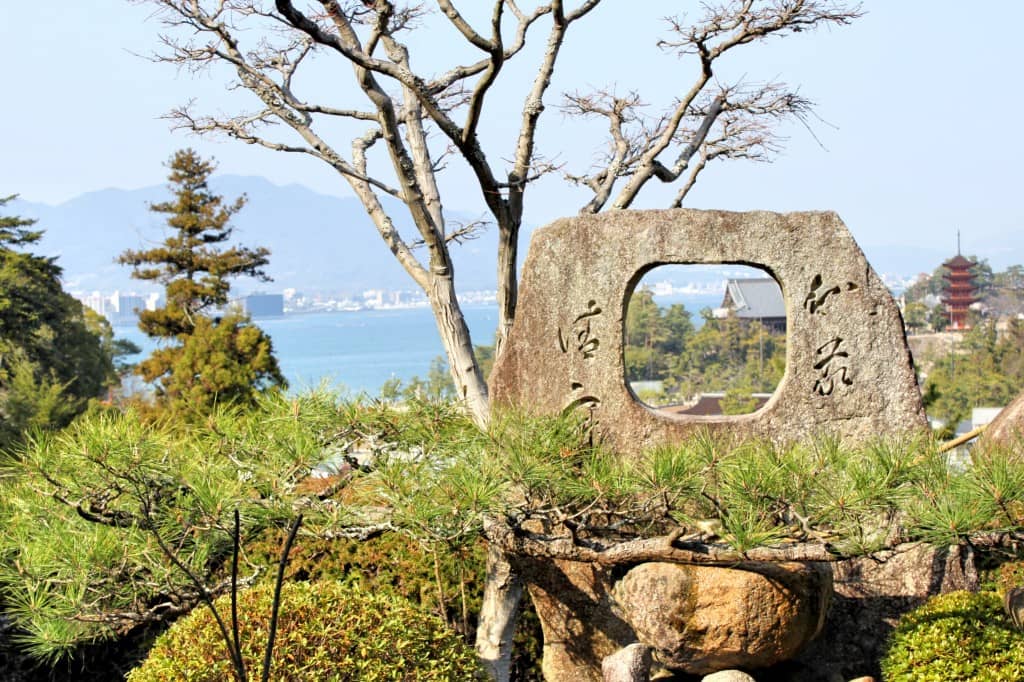
Making Momiji Manju
On your way back down, stop by the second floor of the Shishiiwa Ropeway Station to try your hand at making momiji manju. Momiji manju are small sweet cakes in the shape of a maple leaf, usually filled with bean paste. Sessions are held every 30 minutes from 10 AM to 3 PM except for a lunch break at noon until 1:30 PM. A lesson in making the standard version of these tasty local delicacies costs \300 per person or \500 for a couple, and it only takes about 20 minutes. If you want to try more flavors of momiji manju, pick up some fresh ones on the shopping street on your way back to the ferry terminal. You can also try a rice scoop, another local specialty, or some Miyajima-branded Hello Kitty souvenirs.
Getting Miyajima WiFi
Big cities like Tokyo are exciting, but more traditional places such as Miyajima Island have their own special wonder. If you enjoy traveling to some of the more out-of-the-way destinations in Japan like Miyajima Island, you will want to make sure that the information you need is at your fingertips, not to mention stay in touch with friends and family to share your amazing photos on Facebook and Twitter. To do that, you’ll need to choose a data carrier that works for you no matter where you are. Sakura Mobile’s data SIM cards and mobile WiFi routers offer the widest coverage in Japan including access on Miyajima Island. Once you’ve booked one of Sakura Mobile’s Japan WiFi rentals, there will be nothing getting in the way of your travel adventures!

